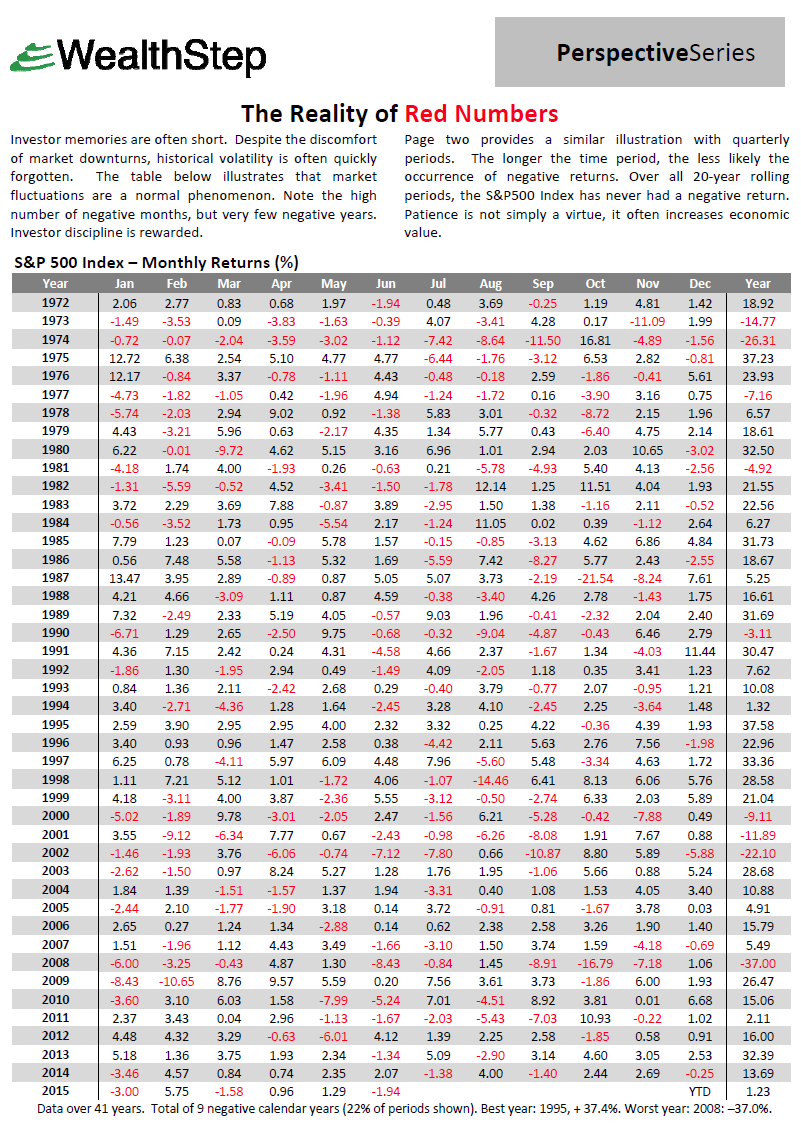11 years ago
Corrections are more normal than often thought and should be inconsequential. Bear markets, which are periods of more significant decline, should be surmountable if you have planned properly.
Stock market “corrections,” defined as drops of 10% or more, are not more likely at the top of a market. Between the years 1900-2013, the Dow (DJIA) stock index dropped 10% or more about once a year. Stocks do not maintain steady value, but they are great tools for avoiding the bigger risks of inflation and longevity risk (running out of money), which are generally far more goal-damaging.
Why do corrections happen? The market “corrects” itself to more appropriate levels, as economic conditions and investor risk appetites change. Such adjustments can be a healthy way to reduce investor complacency and keep excessive risk-taking in check, thereby reducing the chance of bigger drops.
If you are worried about a correction, should you reduce your allocation to stocks? Market timing is an unpredictable approach at best, and reducing stock exposure reduces your long-term return, which can jeopardize your goals. The right time to reduce risk is when your return requirements are lower… i.e. when your time horizon has decreased or you have more assets than needed to achieve your goals.



